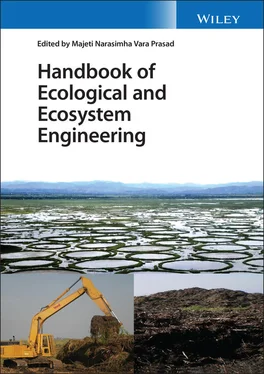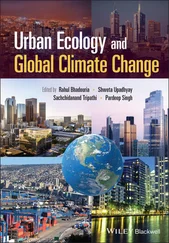1 ...7 8 9 11 12 13 ...33 Constanza et al. (1987) surveyed the economic value of 17 ecosystem services in 16 biomes; they only considered renewable resources and excluded non‐renewable fuels and the atmosphere. This study has shown the lack of standardization in the categorization of ecosystem services, as well as the difficulty of presenting the real valuation of these services.
Overall, the valuation of ecosystem services depends on how much individuals would be willing to pay for a specific service, which makes this type of assessment relative since value is specific to objectives of choice (moment) and individuals evaluate things in different ways. A single person can assign two different values to the same service depending on the person's momentary state and whether they have greater or lesser need of it at that moment [29]. In addition, these services are often indispensable; for many individuals, no institution or technology can make them expendable [19].
Several scholars have tried to improve methodologies in the last two decades to achieve well‐founded valuation parameters with applicability in different fields. Accordingly, De Groot et al. [18] have shown that data on ecosystem services often appears on incompatible scales. According to them, even if a given ecosystem service is sometimes valued at the price individuals are willing to pay for it, in some cases this service is so necessary for their survival that it is more logical to measure how much individuals would be willing to pay to avoid losing it.
According to Merico [30], it is necessary to differentiate value from intrinsic value among different economic value types associated with natural resources. Use value derives from the way the environment is used, such as mineral resource extraction or birdwatching. On the other hand, intrinsic value is the value of a given good – even its potential value – such as a certain plant species growing in a specific area or a particular insect species.
Based on the assumption that every ecosystem service derives from a given ecosystem function that has value for human beings, De Groot et al. [18] have systematized a wide variety of ecosystem functions by categorizing ecosystem services provided by such functions, either individually or jointly. The authors mentioned above divided ecosystem functions into four different groups: (i) regulation function (gas, climate, and water, among others); (ii) habitat function (places, such as refuges and estuaries, which provide habitat for animal and plant species); (iii) production function (food production), and; (iv) information function (cultural, recreational, historical, spiritual, scientific, among others); this division enabled the same groups in different environments. It is important to highlight that both regulation and habitat functions provide support to and maintain natural components; thus, they contribute to the provision of other functions [28].
The biggest challenge today in the study of ecosystem services is standardizing terminologies and methodologies, which is often an obstacle to more consistent analyses [31]; this issue can be associated with a lack of collaborative studies among scientists from different fields [29]. However, significant efforts have been made to establish standardization in these studies, such as those carried out by De Groot et al. [18], the Millennium Ecosystem Assessment (MA, 2003) [32], Santos and Silva [33], and Souza et al. [34].
Santos and Silva [33] conducted a survey of ecosystem services in a coastal zone; they traveled to the study site to make an inventory based on environmental and geological indicators. This strategy was also adopted by Seppelt et al. [35] and reformulated by Crossman et al. [36], who suggested that the evaluated service should be described based on indicators such as quantification unit (i.e. area, time) and scale (local, regional, global).
Souza et al. [34] have adapted the methodologies suggested by the authors mentioned above (see Tables 1.2– 1.4) and used them to value ecosystem services provided by beaches in Ilhéus County, Bahia State, Brazil ( Figures 1.8and 1.9). They concluded that the greater the concentration of technical systems, the smaller the variety and the poorer the quality of provided services, highlighting the importance of conducting diagnosis and ecological valuation studies to substantiate environmental management processes.
Table 1.2 Indicators for the valuation of regulating and supporting ecosystem services.
| Regulating and supporting service |
Low (1) |
Medium (2) |
High (3) |
| Natural sediment retention |
Absence of vegetation in the backshore or along the beach ridge |
Occurrence of vegetation in the backshore or along the beach ridge over at least 50% of the shoreline |
Occurrence of vegetation in the backshore or along the beach ridge over more than 50% of the shoreline |
| Aquifer recharge |
Absence of sandy terraces or terraces with waterproofed surface |
Occurrence of sandy terraces in at least 50% of the shoreline |
Occurrence of sandy terraces in over 50% of the shoreline |
| Water control and storage |
Absence of wetlands or mangrove forests |
Occurrence of wetlands or mangrove forests in less than 50% of the shoreline |
Occurrence of wetlands or mangrove forests in over 50% of the shoreline |
| Pollutant assimilation and recycling |
Absence of wetlands or mangrove forests |
Occurrence of wetlands or mangrove forests in less than 50% of the shoreline |
Occurrence of wetlands or mangrove forests in over 50% of the shoreline |
| Wave energy dissipation |
Absence of surf zone |
Surf zone with up to three breakers |
Surf zone with more than three breakers |
| Foreshore zone natural protection |
Absence of coral reefs and/or sandstone banks |
Occurrence of coral reefs and/or sandstone banks in less than 50% of the shoreline |
Occurrence of coral reefs and/or sandstone banks in less than 50% of the shoreline |
| Backshore zone natural protection |
Absence of beach ridge |
Occurrence of beach ridge in less than 50% of the shoreline |
Occurrence of beach ridge in over 50% of the shoreline |
| Marine refuge and/or nursery |
Absence of estuaries, coral reefs, or sea turtle nesting areas |
Occurrence of at least one refuge/nursery area (estuaries, coral reefs, or sea turtle nesting areas) |
Occurrence of more than one refuge/nursery area (estuaries, coral reefs, or sea turtle nesting areas) |
| Terrestrial or transitional refuge and/or nursery |
Absence of mangrove forests, restinga, or Atlantic rainforest |
Occurrence of at least one refuge/nursery area (mangrove forests, restinga, Atlantic rainforest) |
Occurrence of more than one refuge/nursery area (mangrove forests, restinga, Atlantic rainforest) |
Table 1.3Indicators for the valuation of provisioning ecosystem services.
| Provisioning Service |
Low (1) |
Medium (2) |
High (3) |
| Natural food production |
Absence of activities such as fisheries, shellfish gathering, or gathering wild plants |
Occurrence ofat least one activity (i.e. fisheries, shellfish gathering or gathering wild plants) |
Occurrence of more than one activity (i.e. fisheries, shellfish gathering or gathering wild plants) |
| Food production in farmed areas |
Absence of activities such as crops, animal breeding, fish farming, etc. |
Occurrence of at least one activity (i.e. crops, animal breeding, fish farming, etc.) |
Occurrence of more than one activity (i.e. crops, animal breeding, fish farming, etc.) |
| Water resources |
Absence of surface water bodies or aquifers |
Occurrence of at least one source of water (i.e. surface water bodies or aquifers) |
Occurrence of more than one source of water (i.e. surface water bodies or aquifers) |
| Ornamental resources |
Absence of ornamental resources (i.e. deadwood, oysters, plants, fish, rocks, minerals) |
Occurrence of at least one ornamental resource (i.e. deadwood, oysters, plants, fish, rocks, minerals) |
Occurrence of more than one ornamental resource (i.e. deadwood, oysters, plants, fish, rocks, minerals) |
| Genetic resources |
Occurrence of anthropized areas, pastures, or monocultures |
Occurrence of restinga or agroforestry systems |
Occurrence of forests, coral reefs, estuaries, or mangrove forests |
Table 1.4 Indicators for the valuation of information and cultural ecosystem services.
Читать дальше












